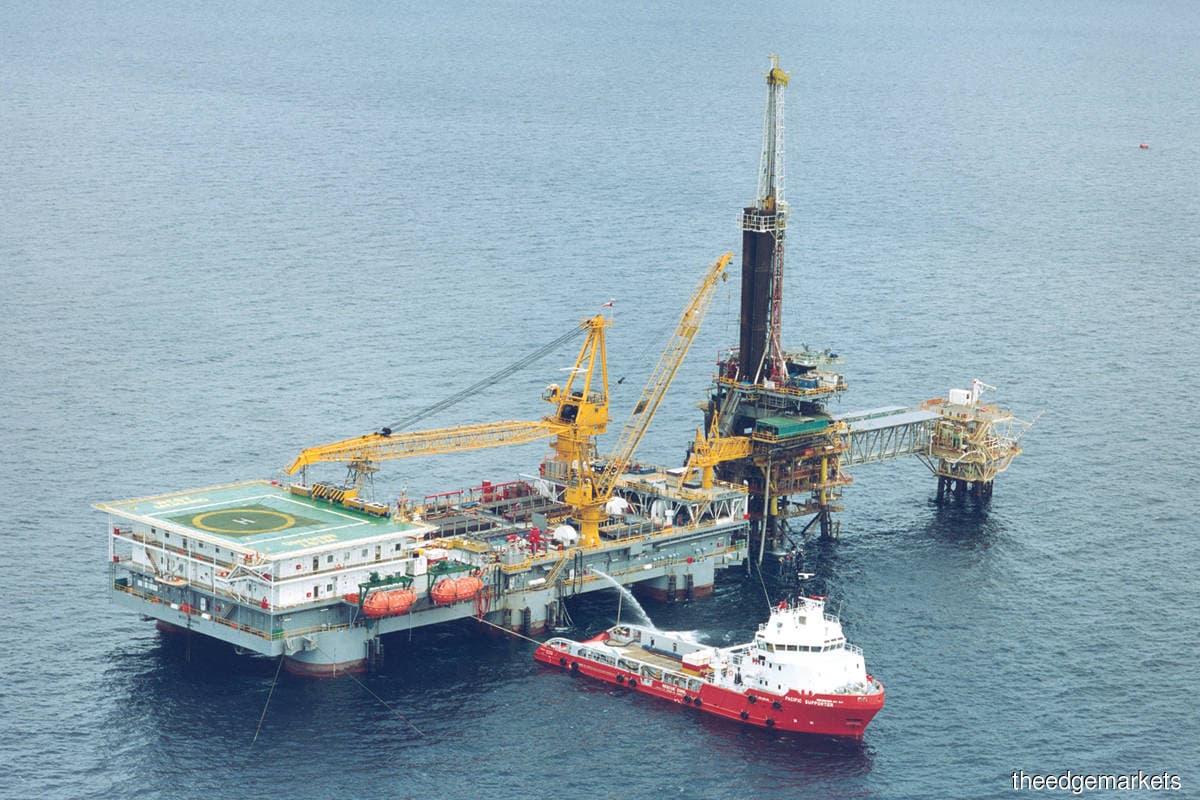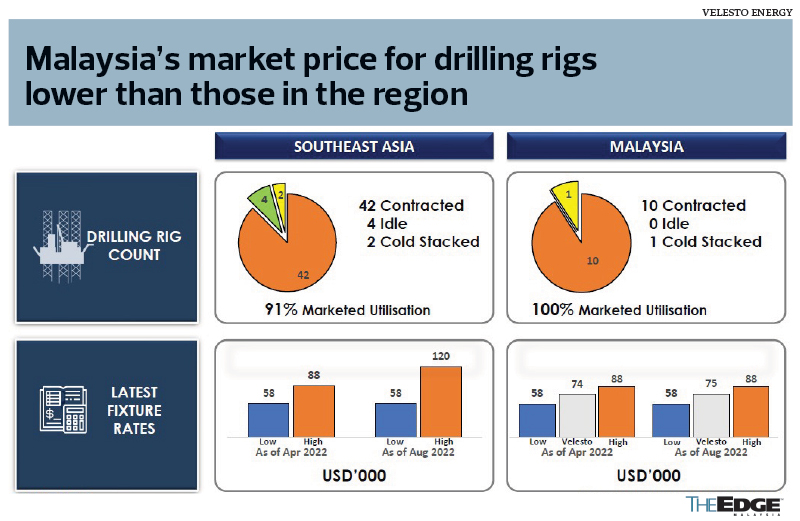
This article first appeared in The Edge Malaysia Weekly on September 5, 2022 - September 11, 2022
WITH oil majors ramping up investments, the demand for services in the oil and gas (O&G) industry is gaining traction in tandem.
This in turn has nudged up rates for many services and equipment providers globally. In Malaysia, it is understood that newer contracts enjoy higher rates for services rendered.
However, many players are also tied up in what is described as “legacy contracts” or agreements that were forged prior to the spike in crude prices, which commenced in end-2021.
Last week, Petroliam Nasional Bhd (Petronas) president and CEO Datuk Tengku Muhammad Taufik announced that the national oil company was in the process of renegotiating existing contracts with vendors to reflect the current market rates for services and equipment.
Muhammad Taufik adds that Petronas is also planning to ramp up its annual capital expenditure to RM60 billion, which is 50% more than it spent in 2021.
But will this higher capex be a game changer for the local oil and gas service and equipment (OGSE) providers?
Analysts reckon that while the local players are set to benefit from the contract renegotiations, especially the ones operating in the exploration and production (E&P) segment, it will take a while before it can be reflected in their financial performance.
Maybank Investment Bank Research analyst T J Liaw says the timing is right for OGSE players to ride the upward cycle of the sector.
“Rate revision upwards is definitely on the cards. It’s healthy, considering the pickup in offshore activities and the tightening of the supply-side, especially asset deployment. It makes sense for clients to lock in charters now on a longer term and higher charter rates, in an elevated oil price environment.
“The O&G business is cyclical in nature and this is the opportune time to ride this upward cycle,” Liaw tells The Edge via email.
He points out that all OGSE providers in the past have gone through “much hardship” as a result of low daily charter rates and declining utilisation of assets from 2014. He describes the industry as “trying to survive, de-gear and rebase costs” over the past few years.
“All local service providers are set to benefit from this [increase in rates], including offshore support vessel (OSV) players such as Icon Offshore Bhd, drilling operators Velesto Energy Bhd, offshore fabricators Malaysia Marine and Heavy Engineering Holdings Bhd, as well as pipe coaters such as Wah Seong Corp Bhd, to name a few,” Liaw says.
Last Tuesday, Muhammad Taufik said Petronas was in talks with the OGSE players to renegotiate their current contracts to reflect the current (high) market price of crude oil.
He added that the cost of drilling rigs, including jack-ups or drill ships, rose as much as 200% on some daily rates, while the cost of other materials jumped 40% to 60%.
In the first half of 2022, Petronas experienced a 36% year-on-year jump in costs to RM128.2 billion, owing to higher material and equipment costs on the back of a spike in commodity prices globally, and higher rates as well.
He remained tight-lipped, however, on the quantum of increase being negotiated and when Petronas plans to conclude the negotiations.
Nevertheless, the impending rate revision failed to excite the market.
The Bursa Malaysia Energy Index, which tracks the share prices of companies in the O&G sector, dipped further last Thursday as weak sentiment continued to loom over the sector and oil prices extended losses.
Brent crude remained volatile, slipping 1.45% to US$94.30 a barrel.
Rakuten Trade head of equity sales Vincent Lau expects Brent crude prices to remain strong this year, as supply remains tight. He adds that the O&G industry will remain buoyant even if oil prices dip to between US$80 and US$90 per barrel.
“Surging oil prices are encouraging the investment in the E&P space, along with growing energy demand as the Ukraine-Russia war continues to drag on,” Lau tells The Edge.
He points out that Petronas’ capex has been muted over the past three years, and many local OGSE players are highly reliant on Petronas spending.
“The rally in oil prices has delivered bumper earnings to Petronas, but that has yet to translate to the OGSE players. With more projects expected to come on stream and more contracts to be dished out, coupled with better rates, we expect OGSE companies to see better financial results in the coming quarters,” Lau says.
RHB Research analyst Sean Lim expects companies such as Bumi Armada Bhd, Yinson Holdings Bhd and Coastal Contracts Bhd to benefit from higher O&G activities and higher domestic capex allocations and better service rates.
Domestic capex rose 30% y-o-y, and activity is likely to escalate in the coming quarters, he says in a report last week.
Players in the OGSE industry had for years suffered massive losses, undertaken significant impairments and reneged on their debt obligations. Some companies are still laden with debt and others are undergoing restructuring, unable to recover from the last oil price rout that started in September 2014.
When crude oil prices took a plunge in 2014, Petronas, under its Coral 2.0 programme, reduced costs and improved efficiencies, which resulted in contract renegotiations with petroleum arrangement contractors and OGSE providers.
As such, renegotiating upwards the current contracts is timely for the OGSE players that have yet to benefit from the upswing in the global crude oil prices, but will it be enough to change their fortunes?
Save by subscribing to us for your print and/or digital copy.
P/S: The Edge is also available on Apple's AppStore and Androids' Google Play.
